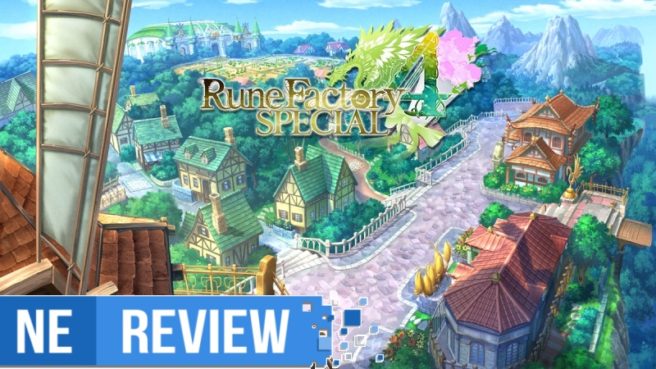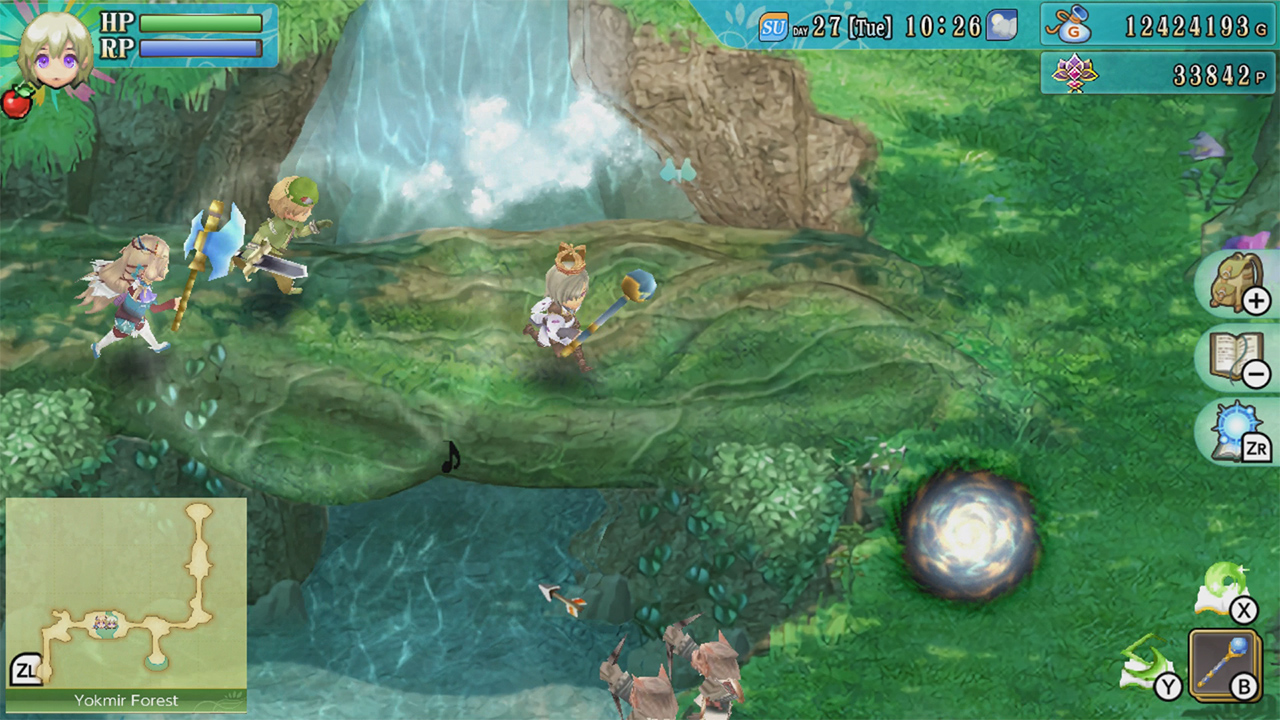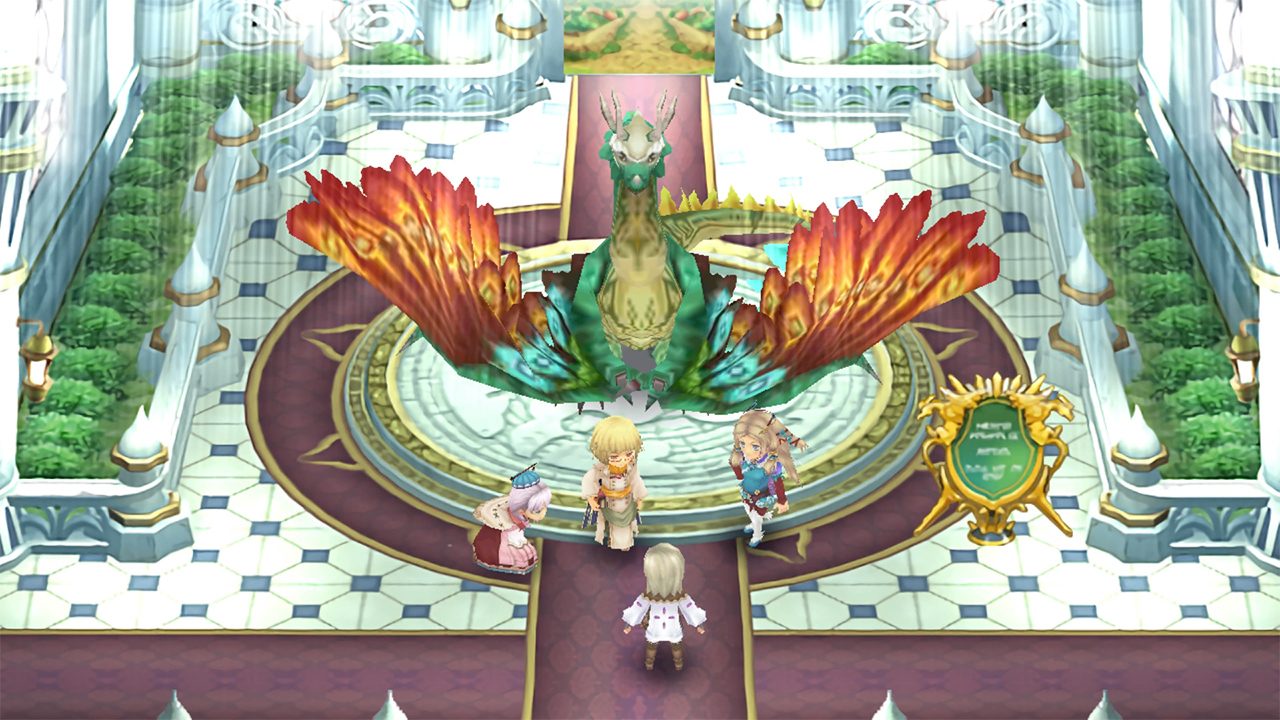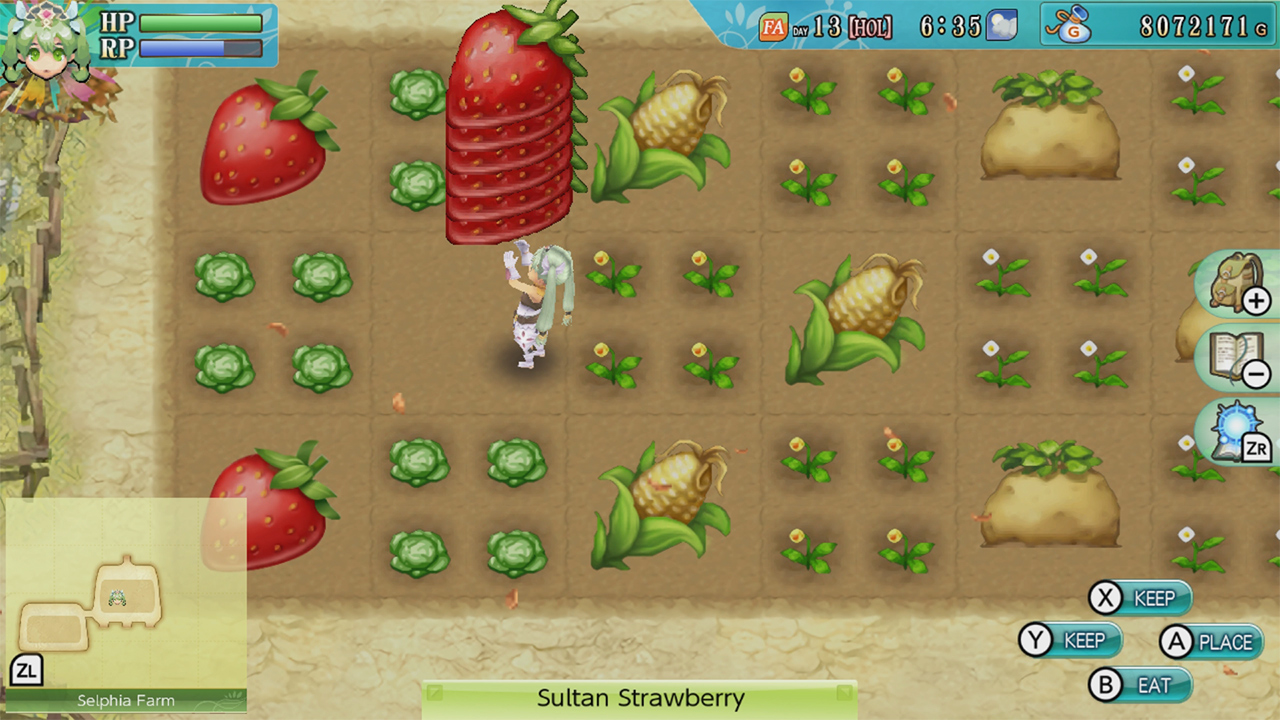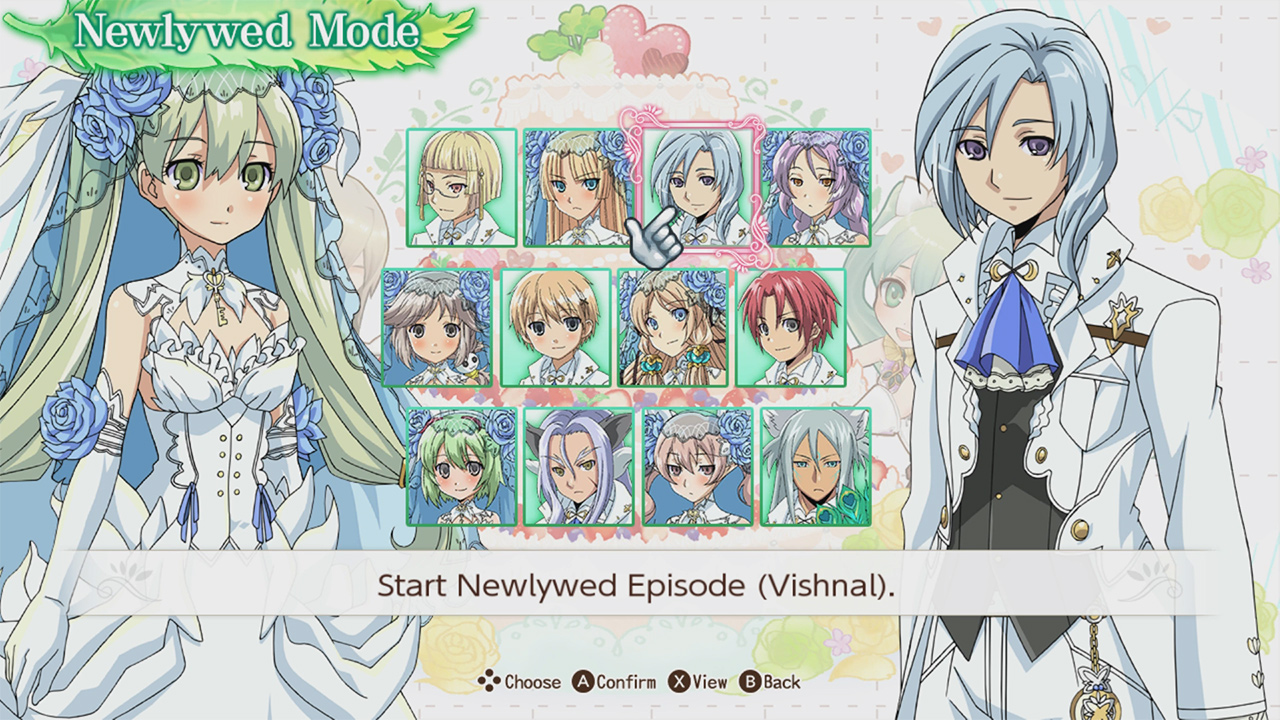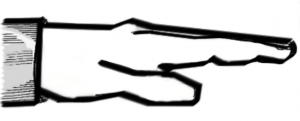[Review] Rune Factory 4 Special
System: Switch
Release date: February 25, 2020
Developer: Marvelous
Publisher: XSEED Games
It’s been nearly a decade and a half since Rune Factory made its debut as a more action RPG-focused spin-off of Harvest Moon, but the series has been dormant for quite some time. While we wait for Rune Factory 5, Rune Factory 4 Special brings the beloved franchise to Switch to ease people in. It’s every bit of great as you remember it to be on the 3DS, and in fact, outside of having one less screen available, it essentially carries with it the same content and style from 2012. This keeps things nostalgic and familiar, but also shows off its age.
In Rune Factory 4 Special you’ll find yourself aboard a ship before having an accident where you’re ambushed and land in the town of Selphia. While you’re mostly okay physically, memory loss causes you to forget who you are and where you’ve come from, so once the hero lands atop of the castle of a divine dragon, Ventuswill, you’ll be faced with a series of questions as to what your initial objective was. However, practically becoming a blank slate, the hero dawns a new name and role to make himself useful in the land of Selphia as they slowly recover their past with the aid of the townspeople and Ventuswill.
Rune Factory 4 Special maintains its meaty experience with a decent amount of dialogue and tutorials to aid players through their beginnings as royalty in Selphia and help the town flourish through festivals and relationships both personal and professional. However, not everything is left to lucrative business decisions within the town itself. You’ll have to learn to survive and fend off monsters in forests and dungeons to get stronger, befriend others, and gather ingredients to gain the trust and loyalty of those around you. Even though you’ve been given the title of temporary Prince by the Divine Dragon of Wind herself, you still have to work to own up to the honor of the name.
The blend of farming, getting to know people in town, and going out slaying monsters with action RPG mechanics makes it enjoyable for people like me who heavily focus on RPGs in general but also appreciate downtime in between when you want to stop playing the game and do the inevitable grinding without actually having to stop. It gives more depth to the world and makes every character count as you see them repeatedly, with virtually new dialogue for every day of the week and month. And with a plethora of events to conduct and host, it keeps the land of Selphia feeling alive and breathing with authentic interactions that keep you looking forward to the next day. It is worth mentioning, however, that one second of real life time is one minute in-game, so days can pass by relatively quickly – especially when you’re super invested in what’s happening. Since it can feel a little stressful having to schedule everything accordingly when things tend to occur in a blink of an eye, despite the relaxing nature of Rune Factory 4 Special (assuming you’re not playing on Hell difficulty), the world can feel like it’s running away from you if you’re not willing to keep up. It doesn’t necessarily penalize you for doing so, but a lot of Trust and Royalty points will come from you micromanaging and completing tasks for townsfolk, given by talking as well as requests from a request box outside of the castle.
I like to focus more on adventuring and RPG aspects of games, but Rune Factory does a very good job at balancing the two making it feel half-and-half to the point where if you’re like me and rather have a 30/70 experience with the majority going to dungeons and leveling, whatever work you do have back at town ends up meaningless as crops wither, need to be tended to, and requests expire after a certain time. With one second acting as one minute in-game, literally every moment counts. As you progress throughout the game, though, you can thankfully gather acquaintances and tame beasts to help with upkeep and accompany you in battle, tending to the farm, and more. Delegating in such a way makes things much more manageable, but no matter what difficulty you’re playing at, the beginning of the game will typically feel like a chore for newcomers of the series as you try to be a contributing member to society.
Multiple boss types and an action RPG approach to these battles keep things fresh as you show off your multiple weapons and spells you’ve acquired throughout to slay enemies in your way as you adventure through themed ruins, forests, and abandoned areas both recent and historical to grow and retrieve your memories. Bosses come in all shapes and sizes, and what makes them typically exciting is how you can recruit them later in the game once you’re skilled enough to tame them. It’s a difficult and daunting task, but they make powerful allies that make the exploration experience much more satisfying and manageable. The boss fights can be fun and rewarding, though the stage in which they take place is fairly repetitive, always being found in a circular arena-esque scene that only separates itself by color to match a dungeon’s theme.
Dungeons, Selphia, and Rune Factory as a whole contain a beautiful color palette that have helped make it eye-catching all these years. Whether in town, out for exploration, or ready for battle, the environments feel somewhat magical as the colors are married to not just the flora but the structures and animals that inhabit it. Birds and butterflies fly across the screen to give that sense of flight and freedom as you flow throughout the maps of each location completing your objectives much like the waterfalls and rivers that help accentuate the feeling of high spirits and hope. Because of its design I was reminded a lot of how the Mana games tend to do their environments and backdrops in a very bright and beautiful way, helping to heighten that sense of adventure out in the wild.
Though the gameplay remains intact and is a treat to both farming sim fans and RPG enthusiasts filled with plenty of romance, exploration, crafting and the sort, a recurring theme of thoughts that kept going through my head playing Rune Factory 4 Special is that this is essentially a 1-to-1 port at a base level. Any upgrades are superficial and don’t actually have any real impact or quality of life changes to the game itself. The Newlywed Mode and Another Episode options are their own portion of Rune Factory 4 Special only accessible through the main menu as they serve as side content, and whatever you can do in the base game to “enhance” the experience like its new Hell difficulty – which increases enemy damage, aggression, and resistance dramatically – and HD graphics serve as nothing more than window dressing. Nothing feels definitive, and it’s very much a product of its time with a heavy reliance on remaining as a portable experience for an optimal playthrough.
My first two or so hours were in TV mode to get a feel for how it played and looked on the big screen given its roots as a 3DS game, and being touted as having HD graphics, I was in a state of shock to see just how bad it looked. The 3DS’ resolution maxed out at a measly 240p, and while most games made it work within the parameters of what they were trying to achieve, lots of smaller details went missing or were severely blurred, and the way Rune Factory 4 Special boasts its “HD Graphics” feels nothing more than a blown up image stretched to Hell difficulty and back. Some models are smoothed out in the same way you would expect a mobile port to handle an HD conversion, but with minimal anti-aliasing, flat backgrounds, and even the animated videos still remaining highly compressed and seemingly still at their original resolution, everything here still feels very 2012 sans a second screen. Rune Factory 4 Special performs well with rarely a hiccup, but further revealing its age and lack of true care and attention are goofy little instances of characters still telling you to “find it on your bottom screen” and look for certain icons that don’t exist.
The user interface has obviously required changes to accommodate for the lack of a second screen, so everything has essentially been thrown onto the main screen with your sub menus effectively serving as inventory management. Outside of being able to change the size of the map (which can take up to 40 percent of the screen at its largest option), you can’t really do anything about the rest of it. An icon rests tied to most buttons on the screen and you can’t turn the feature off, so the screen can feel unnecessarily busy when really all I’d like is to have the time and date, and maybe currency and HP with a fade feature, on the corner of the screen. In handheld mode it is nice to be able to have touch screen support to simply tap the icons on the edge of the screen, but even so the same action is perfectly feasible with a button, so it feels unneeded. The only options you’re able to tweak are turning BGM, SFX, Voice, and Character Portraits on or off to your liking. Everything still feels very 2012, and even if you’re a newcomer to Rune Factory 4 Special, you can feel the rust that’s accumulated from last generation hardware.
Rune Factory 4 is, as one can imagine, a very long game. RPGs and simulators both can take an enormous amount of time by themselves due to their nature of meticulously planning, farming (whether for items or ingredients), leveling, and more, so mixing them together in Rune Factory’s case will have you spending upwards of 100 hours if not more if you’re not just running through story content. This is the type of game that has plenty to do in all corners of the map inside and outside, so even though the “Special” content isn’t anything particularly noteworthy other than Newlywed Mode allowing for different paths and scenarios with various lovers as to not have to play the game from beginning to end repeatedly over ten times, and Another Episode which serves as a bite-sized visual novel-esque side story with many characters (they only take a few minutes to complete), the base game still has a ton to offer for new players interested enough to see what Rune Factory is about that may not own a DS or 3DS before Rune Factory 5 comes to fruition. It’s just a shame that returning players don’t really have any incentive to be here and that the game itself doesn’t feel significantly enhanced.
The Verdict
Rune Factory 4 Special isn’t so special in the grand scheme of things, but the original game and series as a whole have always been incredibly fun thanks to its seamless blend of farming life simulation and RPG mechanics that help keep it fresh and exciting with epic fantasy stories and battles to propel the gameplay further. Rune Factory 4 Special, despite its small additions, doesn’t really add anything worthwhile to the experience and almost feels like a direct port of what was on 3DS, minus the second screen. Now the single-screen experience feels a bit cluttered, and while it’s nice having touchscreen capabilities in handheld mode to make accessibility more fluid, there isn’t any way outside of this to adjust the interface to your liking, so you’re left with an overwhelmed screen of information and an inventory system that feels dated and almost working against you. Rune Factory 4 Special is still very much a handheld game given how hideous it looks on a TV, but it’s rather sharp on the smaller screen, and having the extra functions like touch clearly makes it superior this way. However, unless you’re a massive Rune Factory fan and want to play Rune Factory 4 again, there’s not really anything substantial being offered to warrant a revisit, though newcomers would more than likely find a great experience to be had here.
Review copy provided by the publisher for the purposes of this review.
